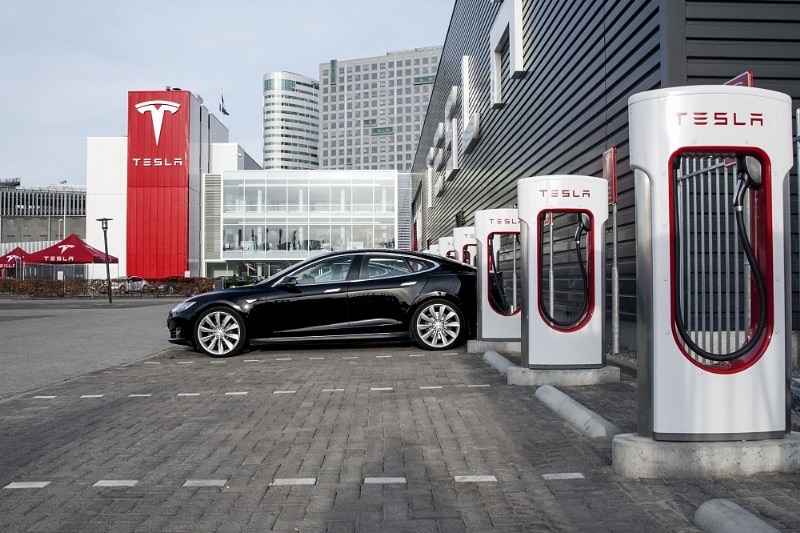

News
Tesla taxi service in Netherlands wins fight for free, unlimited Supercharger use
A taxi driver in the Netherlands who pilots one of Tesla’s all-electric vehicles scored a significant victory on Friday over the commercial use of Tesla’s charging stations including its high-powered Supercharger network.
A civil service judge from the Court of Amsterdam ruled in favor of a claimant who filed suit against Tesla Motors Netherlands BV, stating that the self-employed taxi driver for Schipoltaxi must be allowed the free and unlimited use of Tesla’s chargers, including usage of the often congested Supercharger station at the company’s Amsterdam location.
“Car manufacturer Tesla must allow a taxi driver unlimited and free of charge to use his super-fast charging stations, also at the Amsterdam Zuidoost location,” reads the ruling.
According to the (translated) court statement, the claimant purchased a Tesla Model S with 85 kWh battery in 2014, with the mutual understanding between Tesla and the buyer that the vehicle would be used as a taxi service. The claimant states, “At the time of the conclusion of our (purchase) agreement, it was expressly agreed at the time that I would be allowed to use all supercharges from Tesla in the world free of charge and without any restrictions. At the time of the conclusion of our agreement, it was entirely clear to Tesla that the vehicle purchased by me would be used as a taxi.”
The claimant brought forth a passage from Tesla’s website, which at the time indicated that buyers of a Model S or Model X before January 31, 2018, would have free, unlimited Supercharging that’s also transferable when the vehicle was sold. In their suit against the California-based electric carmaker, the claimant cited an email that was sent by Tesla that would go against the company’s messaging of free and unlimited use of Supercharging.
As read in the court statement:
In an e-mail dated 11 January 2018, Tesla informed a number of taxi drivers, including [the plaintiff], among other things:
” Increasingly, we are seeing a commercial use of the Supercharger (one of the charging stations for the Tesla, where electricity can be charged at high speed, viz.) In Amsterdam Zuidoost. This Supercharger is located at the same location as Tesla’s headquarters for Europe, also service center as well as sales location. This increasingly leads to queues for the Supercharger during peak hours and an unclear, and sometimes even dangerous (traffic) situation, for customers, employees, suppliers and other visitors. In view of (traffic) safety at this location, we reserve the right to change the access for taxis to this Supercharger in Amsterdam-Zuidoost after 31 January 2018, especially during peak hours, from 7:00 to 22 :00h, to limit. “
On the same day, [the plaintiff] protested against it by e-mail. This e-mail states, among other things:
” At the time of the conclusion of our (purchase) agreement, it was expressly agreed at the time that I would be allowed to use all supercharges from Tesla in the world free of charge and without any restrictions. At the time of the conclusion of our agreement, it was entirely clear to Tesla that the vehicle purchased by me would be used as a taxi .”
The latest ruling in favor of the Tesla taxi driver brings to light a hot topic of whether individuals and companies that have purchased a single or fleet of Tesla Model S and X, under Tesla’s narrative that buyers will have “free for life” Supercharging, can, in fact, use the vehicle(s) for commercial purposes. For the many taxi and livery services that have founded their business models largely around the financial upside of having free fuel, their livelihood depends on it. The vast majority would argue that they’re providing Tesla with free advertising to every passenger they transport, by showcasing the vehicle and benefits of driving electric to a potentially new customer.
Other Tesla taxi services like Southern California-based Tesloop, which has risen to popularity among its passengers including celebrity clientele, yet unpopular among some local Tesla owners who claim that the company is occupying much-needed Tesla Supercharger stalls, tout the benefits of being able to drive a vehicle for nearly a half million miles while having virtually no maintenance costs.
While the court ruling in the Netherlands may appear in favor of the Tesla taxi driver, you as a buyer or owner, be it for personal or commercial use, are encouraged to look at Tesla’s Supercharger policy through a wider lens. Play a part in the company’s mission to accelerate the advent of sustainable transport by bringing compelling mass market electric cars to market.

Investor's Corner
Tesla bear gets blunt with beliefs over company valuation
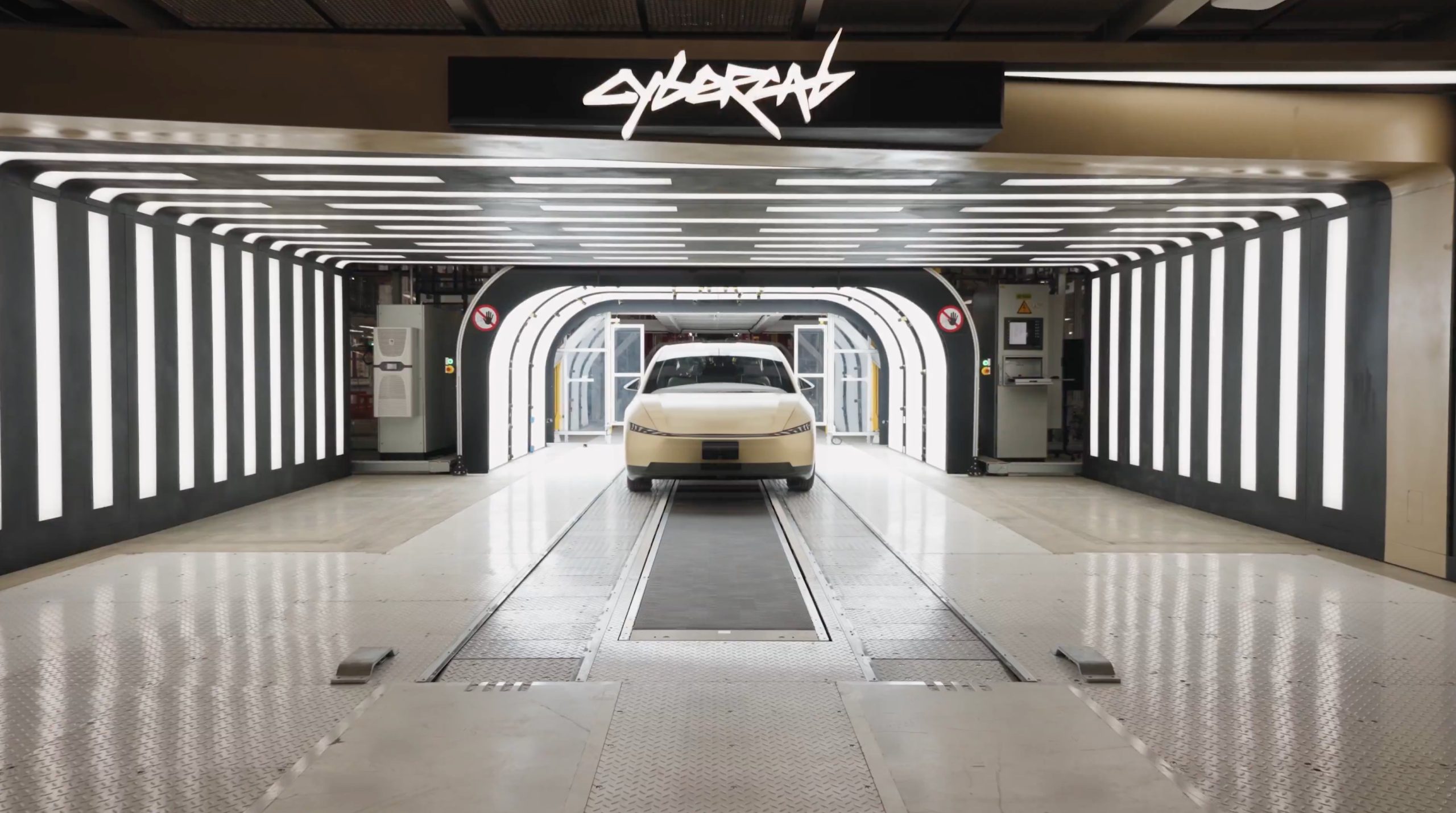
Tesla bear Michael Burry got blunt with his beliefs over the company’s valuation, which he called “ridiculously overvalued” in a newsletter to subscribers this past weekend.
“Tesla’s market capitalization is ridiculously overvalued today and has been for a good long time,” Burry, who was the inspiration for the movie The Big Short, and was portrayed by Christian Bale.
Burry went on to say, “As an aside, the Elon cult was all-in on electric cars until competition showed up, then all-in on autonomous driving until competition showed up, and now is all-in on robots — until competition shows up.”
Tesla bear Michael Burry ditches bet against $TSLA, says ‘media inflated’ the situation
For a long time, Burry has been skeptical of Tesla, its stock, and its CEO, Elon Musk, even placing a $530 million bet against shares several years ago. Eventually, Burry’s short position extended to other supporters of the company, including ARK Invest.
Tesla has long drawn skepticism from investors and more traditional analysts, who believe its valuation is overblown. However, the company is not traded as a traditional stock, something that other Wall Street firms have recognized.
While many believe the company has some serious pull as an automaker, an identity that helped it reach the valuation it has, Tesla has more than transformed into a robotics, AI, and self-driving play, pulling itself into the realm of some of the most recognizable stocks in tech.
Burry’s Scion Asset Management has put its money where its mouth is against Tesla stock on several occasions, but the firm has not yielded positive results, as shares have increased in value since 2020 by over 115 percent. The firm closed in May.
In 2020, it launched its short position, but by October 2021, it had ditched that position.
Tesla has had a tumultuous year on Wall Street, dipping significantly to around the $220 mark at one point. However, it rebounded significantly in September, climbing back up to the $400 region, as it currently trades at around $430.
It closed at $430.14 on Monday.
News
Tesla is making a change to its exterior cameras with a potential upgrade
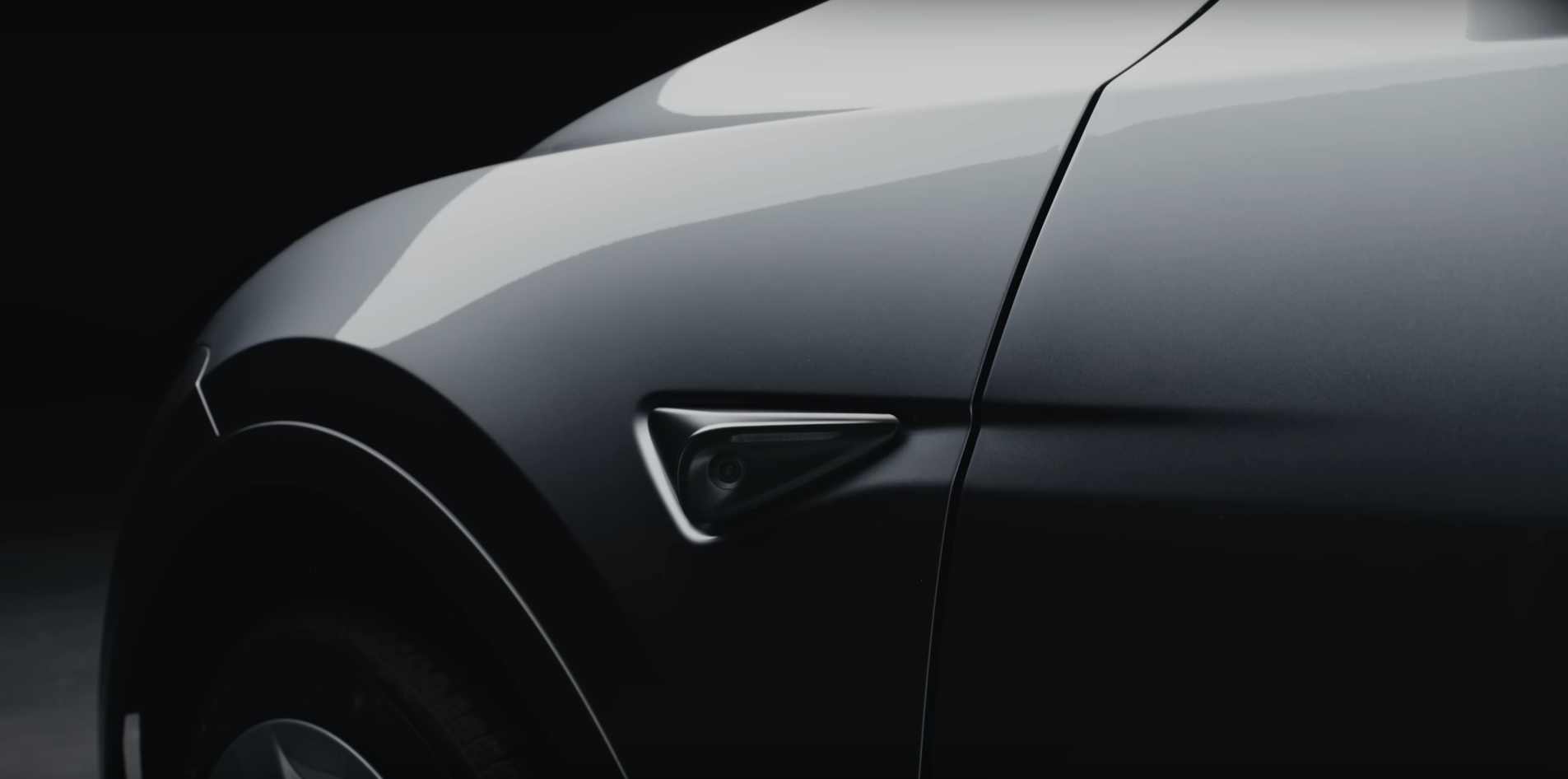
Tesla appears to be making a change to its exterior side repeater cameras, which are used for the company’s Full Self-Driving suite, and other features, like Sentry Mode.
The change appears to be a potential upgrade in preparation for the AI5 suite, which CEO Elon Musk said will be present on a handful of vehicles next year, but will not be widely implemented until 2027.
Currently, Tesla uses a Sony sensor lens with the model number IMX963, a 5-megapixel camera with better dynamic range and low-light performance over the past iteration in Hardware 3 vehicles. Cameras in HW3 cars were only 1.2 megapixels.
However, Tesla is looking to upgrade, it appears, as Tesla hacker greentheonly has spotted a new sensor model in its firmware code, with the model number IMX00N being explicitly mentioned:
Looks like Tesla is changing (upgrading?) cameras in (some?) new cars produced.
Where as HW4 to date used exterior cameras with IMX963, now they (might potentially) have something called IMX00N— green (@greentheonly) December 1, 2025
Sony has not announced any formal specifications for the IMX00N model, and although IMX963 has been used in AI4/HW4 vehicles, it only makes sense that Tesla would prepare to upgrade these external cameras once again in preparation for what it believes to be the second hardware iteration capable of fully autonomous self-driving.
Tesla has maintained that AI4/HW4 vehicles are capable of self-driving operation, but AI5 will likely help the company make significant strides, especially in terms of overall performance and data collection.
Tesla last updated its exterior cameras on its vehicles back in early 2023, as it transitioned to the 5-megapixel IMX963. It also added additional cameras to its vehicles in January with the new Model Y, which featured an additional lens on the front bumper to help with Full Self-Driving.
Tesla’s new self-driving computer (HW4): more cameras, radar, and more
News
Tesla Model Y Standard Full Review: Is it worth the lower price?
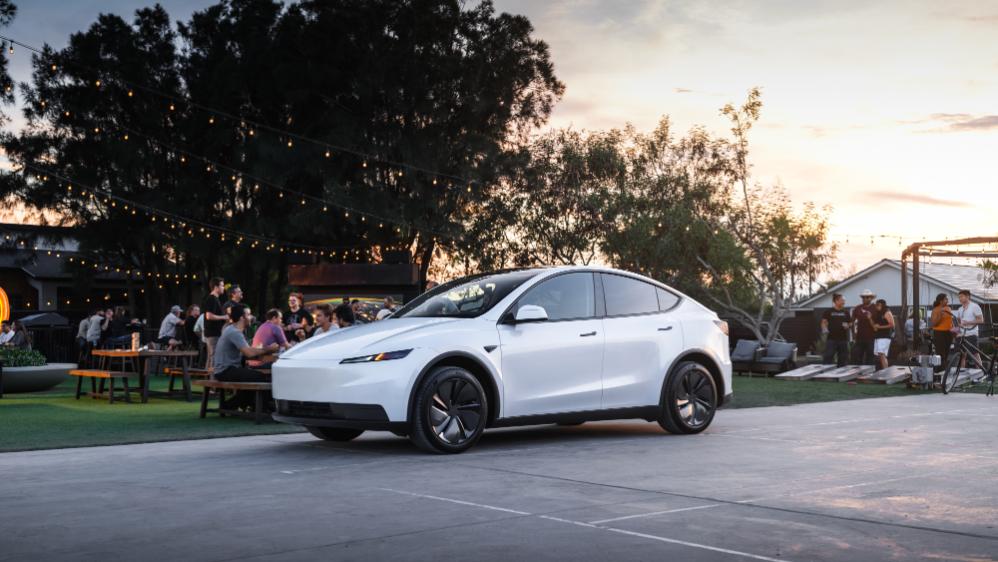
Tesla launched the Model Y Standard as an attempt to offer affordable electric vehicles to consumers now that the $7,500 EV tax credit is gone. We were able to spend four days with the car, and it was more than enough time to determine whether or not the car was worth the $9,000 discount compared to the Premium All-Wheel-Drive configuration, which is what I drive daily.
The Model Y Standard was stripped of some of the features that are present in the Premium trims of the Model Y: no glass roof, a sound system with roughly half the speakers, fewer acoustic-lined glass windows, less storage, and less functionality from an interior standpoint.
However, there are some real advantages to purchasing a Standard Model Y, and there are a handful of situations where this car would be well-suited.
Do I think it is worth the lower price? Well, I’ll get to that later in this article.
Initial Thoughts
In my first impressions review of the Model Y Standard, I talked about the face-value differences between my Model Y Premium and the new, more affordable trim. You will first notice the lack of storage between the front two seats, as the cupholder and additional storage bin sliding doors are void. You still get the cupholders, but they are exposed, which isn’t a huge deal, but it definitely takes away from the sleek look the Premium trim offers.
Additionally, the textile seats replace those of the vegan leather that is available in the upper-level trims. I mentioned previously that I could take or leave the vegan leather for the textile seats, as they are easy to clean, quick drying, and hide oils from your skin much better than leather does.
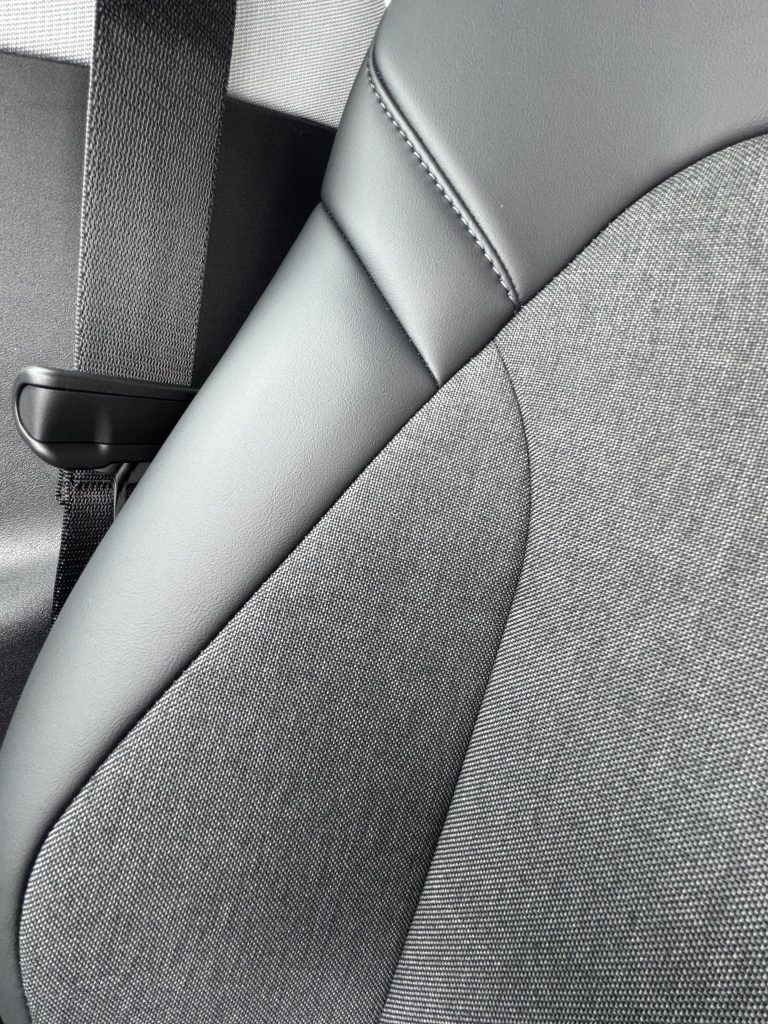
However, there comes one big sacrifice that I have been spoiled by, as the textile seats are not ventilated, so say goodbye to cooling your keister in the Summertime.
The lack of a glass roof is something many owners might not even notice. However, I have been spoiled by the glass roof in my car, and I look out of it every time I’m in my car. It is one of my favorite features, without a doubt. While it would not be a dealbreaker for me, it would be something I would miss terribly.
Things I Noticed After Several Days
Cabin Noise
One of the biggest things I noticed after the first two days in the Model Y Standard is that the cabin is much louder than the Premium. This is because Tesla did not acoustically line all of the glass in the Standard configuration, as it did in the Premium. The side windows are not treated, just the windshields. Therefore, you notice the noise level in the cabin is louder than in the Premium.
If you had not been driving in a Premium trim for a few months, you might not notice it. However, it is something that is a big sacrifice when moving to a different trim level, especially one that is less premium than what you might currently drive.
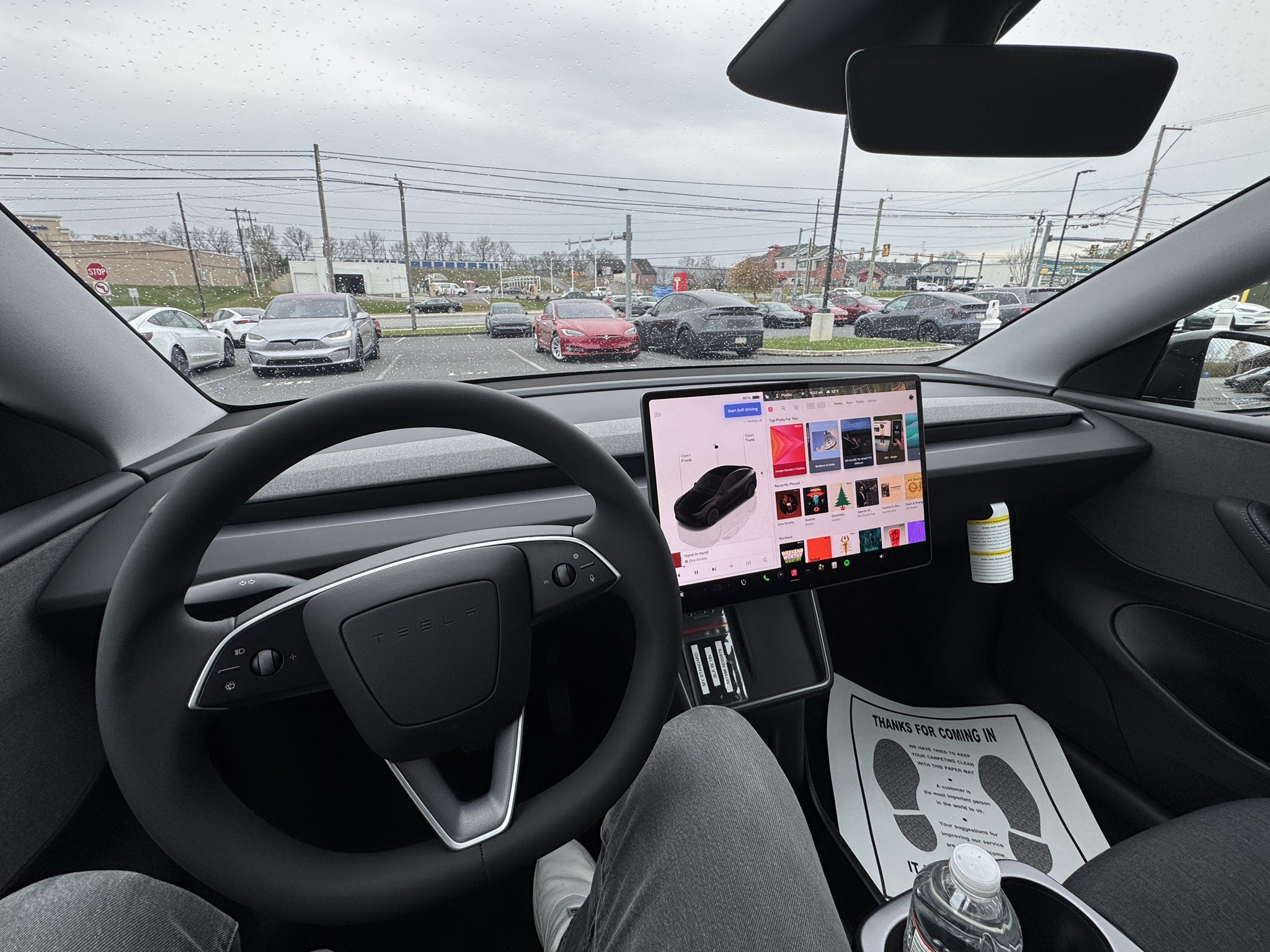
I have always been so shocked at how amazingly quiet the Premium trim’s cabin is; my Model Y is extremely peaceful, even when I’m sitting in bumper-to-bumper traffic, and people have modified mufflers and exhaust systems, tractor-trailers are going by, or crotchrockets are zipping by on the interstate.
This is a huge difference between the two cars, and it is something that is really hard to get used to. I know, first-world problems, right? But when you’re paying between $39,990 and $48,990 for a car, those little things truly do matter.
Stereo System Differences
Another thing I was very aware of was how weak the sound system is. I think if I had bought a Standard Model Y, I would have looked at having the speakers and subwoofers upgraded; I was almost disappointed in how much of a change it was between the two cars.
When I finally picked up my Model Y Premium on Friday (which had been detailed by the awesome team at Tesla Mechanicsburg), the first thing I did was crank up the volume and listen to some music. I really missed having a premium sound system.
Ride Quality
There are virtually no differences between the two cars in terms of ride quality. They are both extremely fun to drive, and the suspension in the Model Y Standard feels perhaps a little bit stiffer than the Premium. Regardless, I didn’t truly notice all that much of a change.
Driving this car around windy roads and tight turns was just as fun as my Model Y Premium. It was a blast to test out, and the slight change in feel was welcome. It’s always fun to drive new cars.
Performance
This is the first EV I’ve ever ridden in where I did not feel that awesome sensation of instant torque. It’s still a quick car, but it is missing that pep in its step that many of us have become accustomed to.
If you want to get someone’s true reaction to EV acceleration, let me just put it this way: This is not the car to do it in.
Some Little-Known Facts About the Model Y Standard
Most of us know that the Model Y Standard has a glass roof, but it is opaque, so even if you took out the headliner, you still would not see out of it. However, there is an interesting little tidbit from a Service perspective that does not make much sense.
If the Model Y glass roof cracks or is broken and needs to be replaced, Service is required to pull off the entire headliner and topside interior to access the glass. It cannot be replaced from the outside. In the Premium, because the glass is exposed, it is a much simpler process to replace the glass. This was an interesting thing I learned.
Additionally, the seat controls are only available on the center screen, which makes it difficult to adjust the seat if you are larger than the person who sat in the car previously. In order to adjust the seat, you’ll have to lean over the chair, access the controls from the screen, and adjust it manually before getting in.
Is the Tesla Model Y Standard Worth the Cheaper Price?
For an additional $9,000 to buy the Model Y Premium AWD, you would get a more capable powertrain, a quieter cabin, better performance, an upgraded interior, more storage, a better sound system, and more luxury features.
To me, the Standard is a car that seems extremely ideal for a teenager’s first vehicle (I got a $1,500 1998 VW Jetta K2 with 200,000 miles when I was 16), or a fleet vehicle. This would be the perfect car for salespeople to use: it does not have all the bells and whistles, it is efficient, and it is just what is needed to drive around to meetings.
For a personal car, it really depends on what you think you need. Admittedly, I’ve been spoiled by the Premium configuration, and personally, I wouldn’t go down to the Standard after owning a Premium trim.









